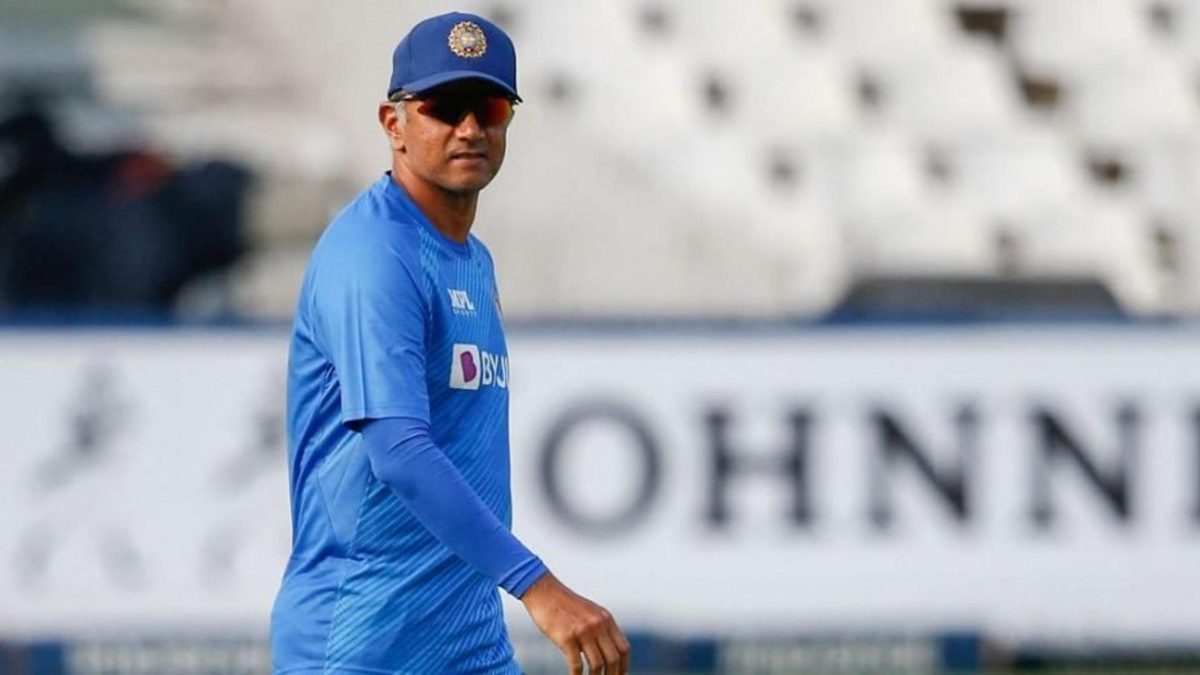
For India, now is about breaking set habits and building new ones, and the first glimpse at ‘wondercoach’ Rahul Dravid’s blueprint is interesting to say the least, writes Rohit Sankar.
A 3-0 ODI series whitewash in South Africa, a not-so-convincing win over the West Indies – this is India in bilateral series like we’ve not seen in a while. And then we have the captain saying after the game: “We don’t mind losing a few games while trying out a few things.”
These were more than just the hollow words we are used to hearing from captains. Rohit Sharma and India actually risked losing the game while trying out a multitude of things in the second ODI in Ahmedabad on a zippy wicket.
For starters, they sent a maverick at the top of the order to partner Sharma in Rishabh Pant, someone who has rarely opened in 50-over cricket. Then there was Washington Sundar promoted over a middle-order batter to milk spin because he would have been wasted down the order against pace in the death.
The icing on the cake, though, was how Sharma changed bowlers after short spells and targeted batters with specific bowlers and strategies. Take the Nicholas Pooran wicket for instance. Someone who likes to start off with a bang, Pooran was given a slip first up and India’s best bowler was brought back into the attack. Prasidh Krishna’s hit-the-deck length is a chink already spotted in Pooran’s hitting range. The match-up was perfect and the pressure yielded.
When Deepak Hooda had Shamarh Brooks in the 31st over, the mid-off was up in the circle inviting the loft against the turn with long-on back. Brooks took the bait and hit it down the throat of the fielder while aiming for the tempting gap in the field.
Before you write these off as just decent, not over the top, strategic moves that don’t quite make you stand up and applaud, bear in mind that this India side has had an almost robotic grip with convention in recent times. This was a team that preferred happily breezing through bilateral series wins until their flaws were revealed on the biggest stage in ICC trophy knockout games.
And then came Rahul Dravid, the India U19 head coach-turned-NCA head, who could do no wrong. Perhaps those expectations played a part in some writing him off after the 3-0 ODI series loss in South Africa. But this was a man who pulled the plug on a Test innings with the great Sachin Tendulkar unbeaten on 194 in just his second Test match as skipper.
Dravid’s persona as a likeable, soft-spoken gentleman plays a part in undermining his shrewdness and cricketing sense. It’s hard to be seen as “cool” if you aren’t performing histrionics like swinging your shirt from the Lord’s balcony. Dravid’s tenure as captain is among the most underrated in India’s cricketing history. It’s arguably the “coolest”. Sandwiched between two storied eras – the Sourav Ganguly and the MS Dhoni era – his time as leader is marred by the early exit from the 2007 ODI World Cup and the controversies around Ganguly and Greg Chappell.
It’s forgotten that Dravid changed quite a few habits in ODIs when leading the side. He empowered the younger guys and turned the group into a confident run-chasing unit, something India hesitated to do under Ganguly. Under Dravid, India won 14 successive run chases and built the core of the team that eventually thrived under Dhoni. The middle-order triumvirate of Yuvraj Singh, Suresh Raina, and Dhoni, a perfect blend of multi-skilled limited-overs cricketers, that shaped India’s next few years in ODIs first thrived under Dravid.
From 2006-2011, India’s ODI side had Dhoni, Yuvraj & Raina in the middle-order at around their peak – each averaging on and around 40 & SR of 85+.
And each with a second (bowling/keeping) & third (fielding/captaincy) skill.
Was some luxury!
— Rohit Sankar (@imRohit_SN) December 11, 2021
A feature of Dravid’s leadership was how India invested in a flexible batting order – players moving about in the batting line-up like never before. Dhoni’s promotion back to No.3 and his career-changing 183* came under Dravid when only a month prior to that he had played a match-winning hand from No.7 under Ganguly.
The bottom line is very similar to now: Dravid was prepared to break conventions, test new things, and be open with his strategies. It is in sync with what Sharma said at the end of the game on Thursday: “I have been asked to do different things, so this [Pant promotion] was different. People will be happy seeing Rishabh open then, but yeah it is not permanent.”
Dravid’s hand in the team template was evident in South Africa when Pant was made the fulcrum around which the batting operated. He was made the designated No.4 (he batted at No.4 in the first ODI here) – a role he has rarely enjoyed in the past.
It’s not that India weren’t successful under Virat Kohli, but the lack of tactical flexibility arguably had its hand in India losing crunch games.
The early signs in the Dravid era, in limited-overs cricket at least, are that he is testing the limits of this team and finding players fluid enough to change their game as demanded. Now, more than ever, results don’t really matter for India as much as testing their resources. The World Cup Super League is of no consequence to the World Cup 2023 hosts and every bilateral series is an opportunity to experiment. The Dravid era is here and it’s exciting. Fasten your seat belts, keep an open mind and embrace the new era.







